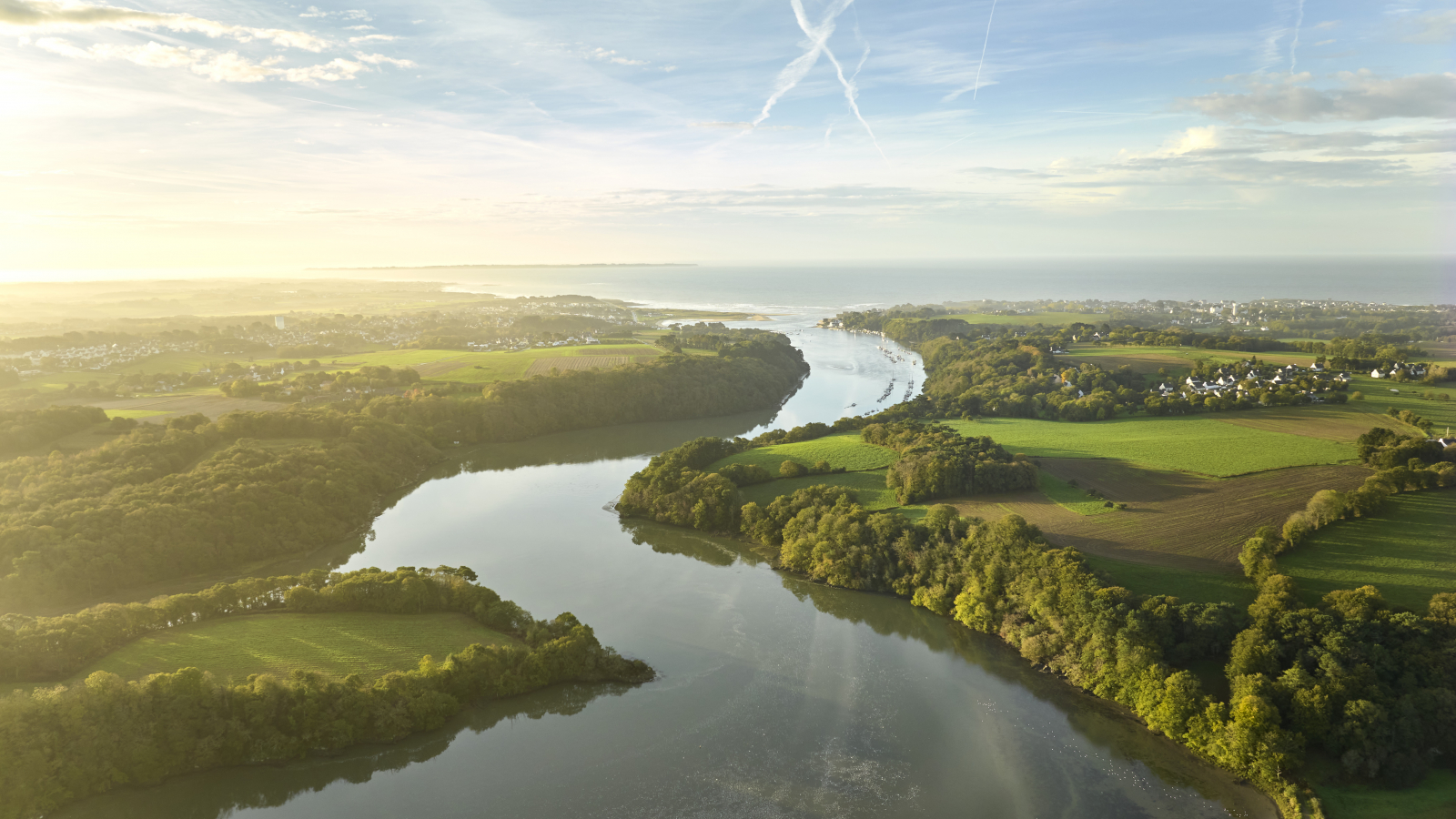
The Laïta Valley
Of all the valleys in Destination Quimperlé les rias, the Laïta is undoubtedly the wildest. Following the winding course of the coastal river for 17 kilometres, its banks are rugged, its vegetation abundant, its fauna varied... and the pleasure for the eyes infinite!
Whether on foot, on horseback or in a kayak down to the port of Le Pouldu, the Laïta valley is easy to explore in pastoral or historical style. And if you're looking for the soul of the valley, why not visit the abbey of Saint-Maurice and its magnificent wooded park.
Get ready for a powerful experience, close to nature...
#1 The Laïta
The Laïta is born in the centre of the town of Quimperlé, at the confluence of the Ellé and the Isole. These two wild rivers flow into the lower town in what becomes the Laïta before flowing towards the sea in a ria, a river valley invaded by the sea. Situated between Finistère and Morbihan, this wild river lives to the rhythm of the tides. The best way to discover the Laïta ria is by kayak. Hire one from Quimperlé to discover this magnificent, unspoilt valley

#2 The town of Quimperlé
Visit the town of Quimperlé and learn about the rich past of this town of character at the heart of the region's history, thanks to its many historic monuments, from the upper town to the lower town and from the Middle Ages to the end of the 19th century.
Stroll along the banks of the Ellé and Isole rivers and take in the sights and sounds of this historic little town.

#3 Carnoët forest
Take a stroll through this ancient state-owned forest, just outside the town of Quimperlé. Take the small paths into the heart of the forest and feel the calm, rejuvenating atmosphere. If you're feeling more sporty, try your hand at one of the many orienteering courses. The banks of the Laïta are never far away, inviting you to enjoy a moment out of time.

#4 The abbey site of Saint-Maurice
It is set in a green setting, well hidden by the surrounding trees. The ruins of the former Cistercian abbey and its outbuildings lie there on the right bank of the river. Saint-Maurice is still alive with the changing tides and landscapes. Visits, exhibitions, nature walks, concerts and shows punctuate the season on the site.

#5 Mussels from Laïta
Less well known than the Bélon flat oyster, the Laïta mussel is a survivor whose tasting direct from the producer will give you pure, authentic pleasure.
Disappeared from the landscape for 50 years, the Laïta mussel made a comeback in 2016 thanks to the restoration of water quality and the hard work of a couple of passionate mussel farmers. Born in the open sea off the island of Groix and matured in the river, this mussel is one of a kind. More and more people are enjoying its fine flesh and subtle flavour, different from that of its open sea cousins.

#6 The seaside resort of Le Pouldu
Le Pouldu, the historic resort of the Quimperlé les rias destination, was built on sand dunes in the 19th century. Famous in the early 1900s, it now welcomes tourists in campsites and seasonal residences. The beaches of Grands Sables, Bellangenêt and Le Pouldu offer a wide range of seaside activities. For the less sporty, the Maison-Musée Gauguin and the Chemin des Peintres are just waiting to take you on a cultural outing!


